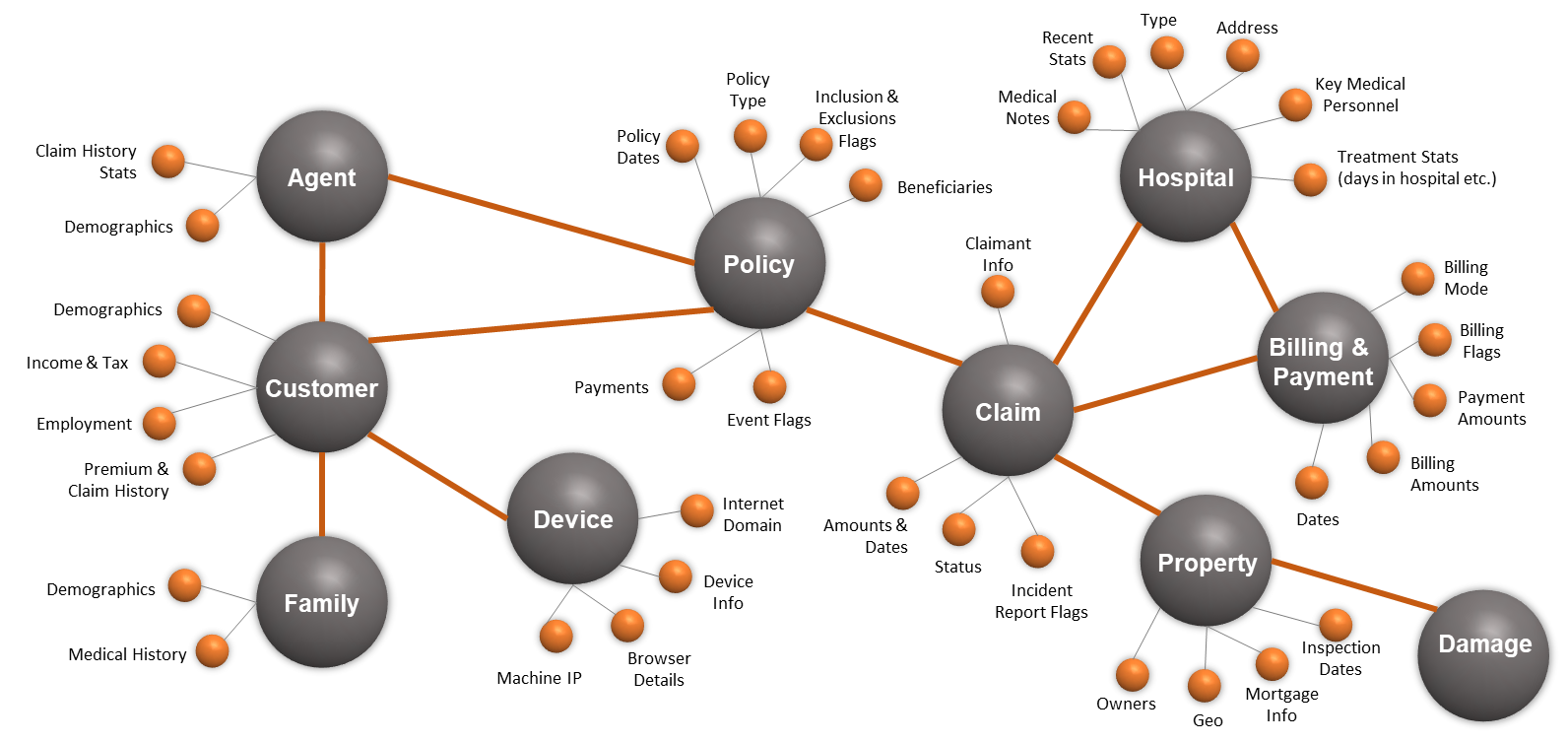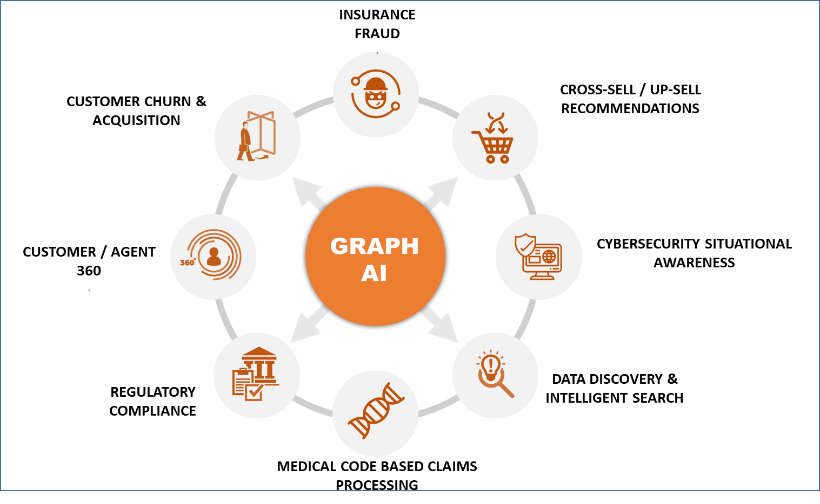Graph Database and Machine Learning
Machine learning is generating a lot of interest among insurers looking to improve their capabilities across the value chain. Advances in big data and cloud technologies have acted as catalysts for the fast growth of machine learning applications. Machine learning is essentially about analyzing huge volumes of data to generate insights and learnings and using those learnings to make predictions.
Graph database technology is gaining popularity in machine learning. Graph databases store data as nodes (which have properties) and relationships, embodying data storage like elements in the real world. Traditional machine learning techniques work on data in tables and don’t consider the connectedness or proximity between different entities. This may be critical in some cases. For instance, it’s tough for traditional machine learning algorithms to use social relations to predict the properties of individuals. Graph data overcomes this issue by leveraging connections and proximity between entities along with their attributes.

Graph Databases can be a powerful tool for building machine learning models for Insurance, which is primarily a data-driven industry. Insurance data models are complex. Traditional methods do not lend themselves well to effectively linking different entities and deriving cross-functional insights. It is akin to finding a needle in a haystack.
Some of the insurance use cases for Graph Database technology include the following:
1. Insurance fraud: Insurance Claim Fraud & Fraudster Detection by extending traditional Machine Learning and community detection methods with techniques like Graph Embedding and Graph Neural Networks (GNNs).

2. Cross-Sell/Up-Sell: Leveraging techniques like Item-based or User-based collaborative filtering, All-pair similarity, or Graph Embedding to build a similarity network. It provides an effective way of recommending to customers what to buy together/next.
3. Cybersecurity Situational Awareness: Storing network assets and events, analyzing patterns for anomalous behavior, detecting Malware, and supporting post-attack forensics with vectors of compromise etc.
4. Data Discovery and Intelligent Search: Using Natural Language Processing (NLP), Search Index, and Graph Algorithms for enabling powerful data discovery and search capabilities.
5. Medical Code Based Claims Processing: Using graphs for identifying insurance benefits from medical codes using NLP and Graph algorithms.
6. Regulatory Compliance: Improved data privacy regulatory compliance using linked data in a Graph Platform combined with enterprise data lineage and specialized artificial intelligence (NLP and Computer Vision) algorithms for automated information extraction.
7. Customer/Agent 360: Graph database is one of the best ways of implementing a 360 view of customers and agents. All information for an entity is in one place with context linking, leading to significant improvement in customer satisfaction during the application process, claim, and service management.
8. Customer Churn & Acquisition: Provide powerful similarity analytics capabilities to predict the customers/agents that are similar to a churned/acquired entity.
Graph AI – A Coforge Offering
Graph AI is a platform from Coforge for building, managing, and analyzing Knowledge Graphs using machine learning to surface new insights from complex network/linked data in an accelerated manner.
Graph AI stores (or maps) different datasets as a Property Graph (Knowledge) and takes into consideration the connections and proximity between entities along with their attributes when performing Machine Learning or Deep Learning.
Graph AI comprises frameworks and reusable utilities for:
- Onboard Data: Data Ingestion and a wrangling Library.
- Unstructured Data Engine: Knowledge Extraction from unstructured Documents (pdf, HTML, word, video, audio, etc.).
- Storage: Graph Data Storage powered by Noe4J/ ArangoDB/ CosmosDB.
- API based access: Data and algorithm access using REST APIs.
- Visualization: Powerful frameworks and libraries for visual analytics of complex graph structure.
- Machine Learning and Deep Learning: 30+ AI/ML algorithms for tasks for node classification, link prediction, graph classification, graph representation learning (node2vec, link2vec, graph2vec embedding).
- Knowledge Graph Reasoning: APIs to predict missing links or understand similarities in a highly intuitive manner.
Built using 100% open-source technologies, Graphic AI is a highly extensible and scalable architecture. With a library of 30+ AI/ML algorithms, we can develop new or augment existing predictive use cases.
If you would like to learn more about how to use the Graph Database in your organization, please contact Coforge. We are ready to help with our proven methods and solutions.





